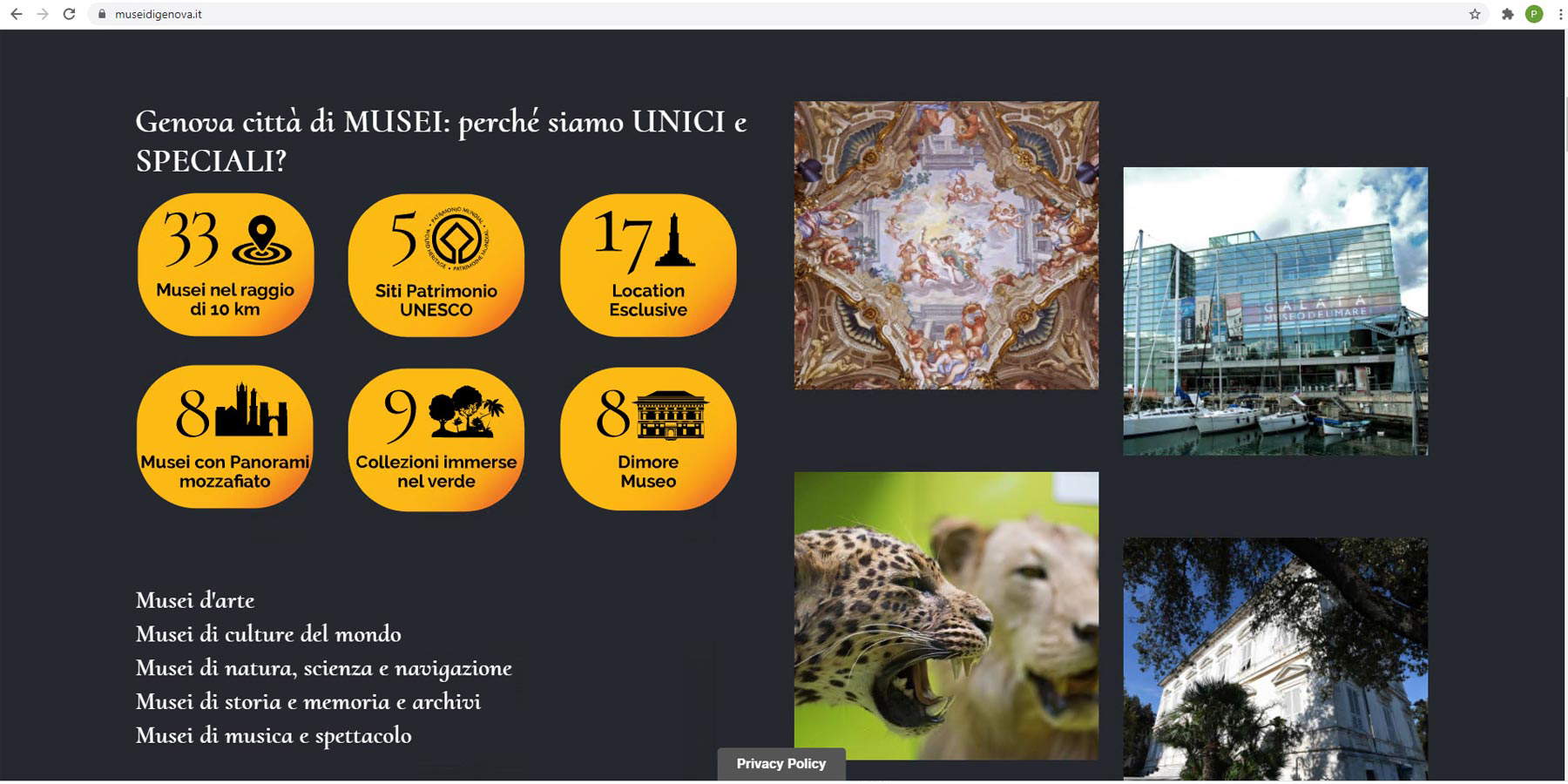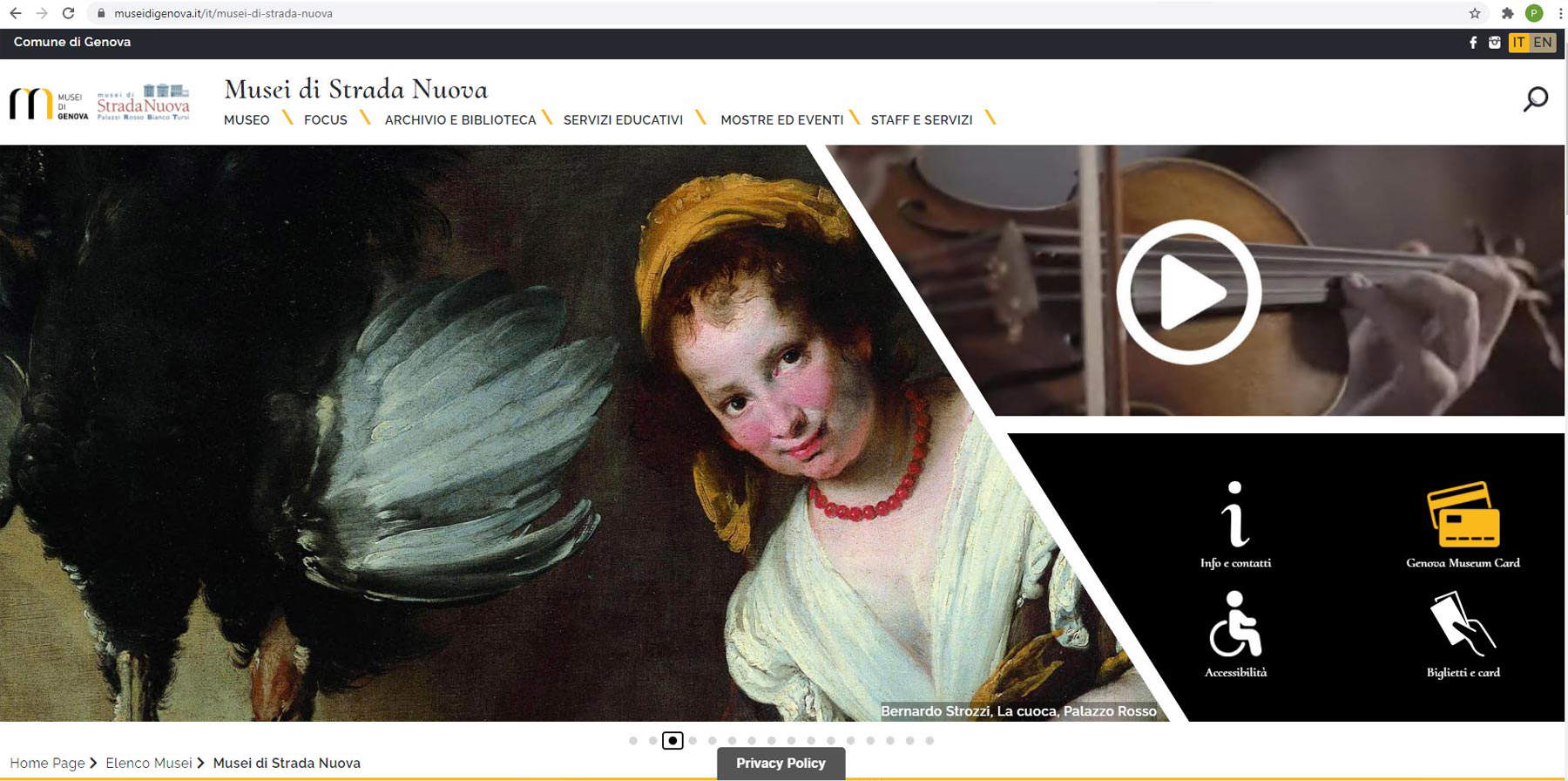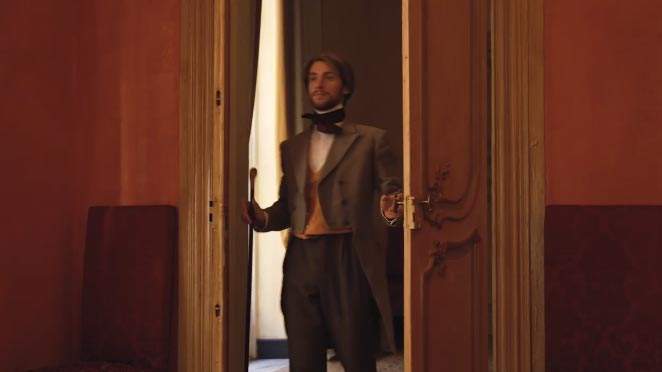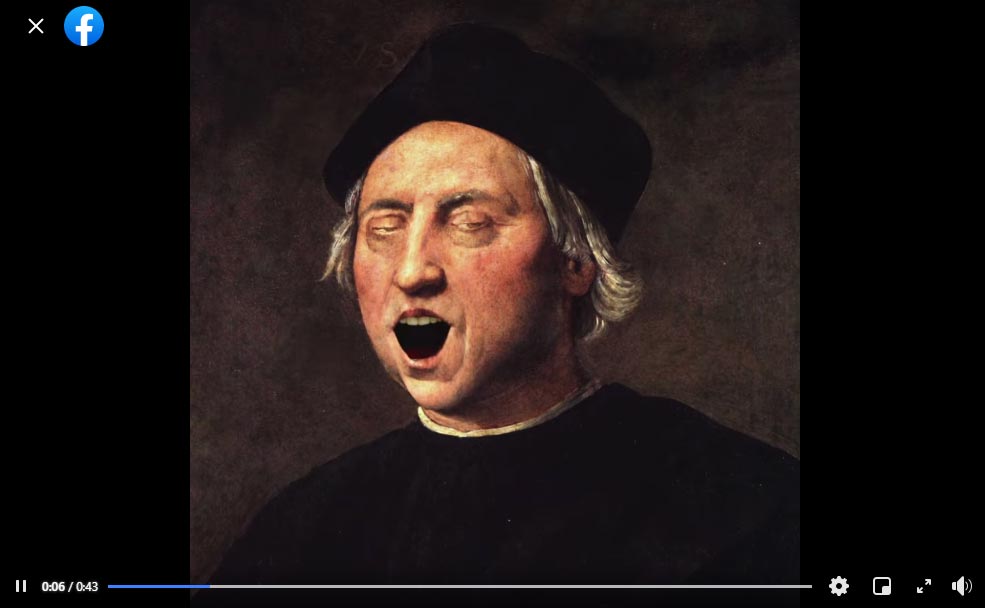New communication for Genoa Museums, but controversy over new exhibition video
New website, new videos on social media: for the past few days, the Museums of Genoa have been launching a new digital communication campaign. The central point of the museums’ new online image is the revamped website, designed with a new graphic look and designed to convey to the public the image of Genoa as a “city of museums.” Alongside the site are a series of videos posted on social media, one of which, the trailer for the exhibition Il Re Denaro. Coins Tell Genoa Amid Art, Luxury and Thrift, has, however, become the subject of heated controversy in recent hours.
The video comes a few days after the launch of the new digital image of Genoa’s museums, which revolves around the recently revamped www.museidigenova.it website, in a much more extensive key than before: in fact, the portal does not limit itself to presenting municipal museums, but offers fact sheets of all 33 city museums, including civic, state and private institutes, divided into five categories: art museums; museums of world cultures; museums of nature, science and navigation; museums of history and memory and archives; and museums of music and entertainment.
“The new site,” reads a note, “opens with a roundup of images with high emotional content, included in a fast-scrolling gallery designed to give an immediate idea of the incredible museum offerings available in Genoa among paintings, sculptures, historic buildings, monuments, and parks. All the museums, distributed within a radius of just 10 kilometers, are marked with an interactive image that links to a subpage containing a slider of high-resolution photographs, a detailed information sheet and a new section, The 10 Wonders, which illustrates the 10 highlights of each museum with photos, note on the author or manufacture, era and description of its historical and artistic peculiarities.” The administration’s goal is to encourage residents and tourists to visit Genoa’s museums in person.
 |
| The new Genoa Museums website |
The new site of the Museums of Genoa
The new site has a revamped graphic design, much more impactful than the old site, but it has also attracted some criticism from the public: some users, did not like the fact that the overused anglicism location (and in general the phrasing used to present museums, such as “museums with breathtaking views”) is used to indicate seventeen unspecified sites. In fact, the buttons referring to “33 museums,” “5 Unesco heritage sites,” “8 museums with breathtaking views,” “9 collections surrounded by greenery,” and, indeed, “17 exclusive locations” are not clickable: the fact that the Lantern appears in the logo, however, suggests that the “locations” are the monumental sites, which do not add to the “33 museums within a 10-kilometer radius,” but are simply a subset of the larger set of 33 museums.
In addition, compared to the previous site, it has become less intuitive to access the artwork search engine (one must first enter the museums’ tabs, whereas before it was immediately at hand), and moreover the same engine returns both English and Italian results referring to the same artworks. In addition, there are also some technical problems: for example, redirects to the old urls have not been prepared, with the result that if someone wants to Google a work from the Genoese museums without going through the site (for example, to this old address to reach Gregorio De Ferrari’sAllegory of Summer fresco in Palazzo Rosso), he will find an error result “Page not found.” And the new urls are often not SEO-friendly either: the De Ferrari fresco, for example, can be reached with an anonymous https://www.museidigenova.it/node/7577.
On the other hand, the iconographic apparatus is very rich: the new site improves the experience of viewing images with quality photographs. News also leaks from Palazzo Tursi that videos will soon be made about art galleries and monuments, as has been done for the Palazzi dei Rolli and churches, a laudable initiative that, during the harshest weeks of the pandemic, already from the first lockdown, opened the doors of the city’s most beautiful and often lesser-known buildings.
 |
| The new Genoa Museums website |
The video of the controversy
Igniting tempers in the city these hours, however, is the trailer for the exhibition The Money King. Coins Tell Genoa Between Art, Luxury and Thrift, conceived by Guido Rossi (Conservator of the Museum of Ligurian Archaeology in Genoa) and curated by the latter together with Anna Orlando (historian of the other, author of several exhibitions and publications on seventeenth-century Genoese art, as well as advisor for Art and Cultural Heritage of the City), a co-production that brings together the City of Genoa and the Associazione Amici di Palazzo della Meridiana, with the participation of Banca Carige. The exhibition will open on May 27 and run until December 12, and will talk about the history of Genoa as seen through coins, in five sections located between the Strada Nuova Museums and Palazzo della Meridiana, with a temporal perspective from the birth to the end of the Genoa Mint, that is, from 1138 to 1860. So far so good: the problem is the video the museums decided to launch to announce the exhibition.
The clip shows a character in early 19th-century historical costume listing the qualities of money: “Thanks to him we founded empires, discovered new worlds, thanks to him we united peoples and faraway places, and won battles that seemed impossible, without him we would not have such beauty in our eyes, and perhaps we would not have become what we are: he is the money king.” The problem with the video, according to many users, is the glibness with which the power of money is associated with Western imperialism (plus a passage in which a portrait of Mazzini is seen camping on the Italian flag with the colors reversed): “you have done more to ridicule the uncritical self-celebration of Western history than a thousand pigeon statues demolished in the U.S.,” writes one user on Facebook, where others comment with laconic “indefensible,” “chilling,” “trashy,” and “shame on you.” Another user writes, “Not even Wall Street in the 1980s would have gotten there. I would have added something in favor of the extermination of Native Americans...kudos also for the upside down tricolor.” Still others speak of an apologia for capitalism.
Harsh criticism also came from the website Genova Quotidiana: “In the Americas, both North and South, between 1492 and 1890 between 70 and 115 million natives were exterminated,” comments Genova Quotidiana. “This is by far the longest and bloodiest genocide ever committed in human history. And really there is little to boast of the primogeniture of the slaughter. Tell that to those who are now already throwing statues of a blameless Columbus in what used to be the ’New World’ to dispute, contesting, all the tragedies that gold, money, has caused in their land, economic neocolonialism.” Criticism also for the phrase “we have united distant peoples and places” (“in tragedy,” the article closes) and for the presence of Mazzini, whose appearance in the video, according to the piece, is out of place in such a context. “What is unfortunate,” the article concludes, “is that on the video are the trademarks of the City of Genoa and the Genoese Museums, which will be instinctively matched with this kind of communication that for cultural circles is chilling. Culture is not sold like pots and pans to an infomercial.”
Of course, speaking is a 19th-century figure, so it is obvious that he is telling his own point of view, which need not coincide with that of the exhibition (which, moreover, will open only soon: moreover, at least judging by the design, it seems that there is not even room to talk about what happened overseas, since the exhibition will focus on Genoa): yet, if user outrage was almost unanimous, the trailer ’s message probably did not prove clear.
On the other hand, the appreciation found by the promotional videos launched by the Genoese museums on Facebook was higher, where some works are seen animated, in certain clips even while talking to each other: among others, the portrait of Christopher Columbus attributed to Ridolfo del Ghirlandaio and kept at the Galata - Museo del Mare, and the portrait of Anton Giulio Brignole Sale, a work by Anton van Dyck kept at Palazzo Rosso. It is a rather popular language, although it has now practically disappeared from Facebook, at least from museum pages (a platform where cultural content is now increasingly well curated and in-depth), while it endures on other less “challenging” social media such as TikTok. Major museums have used it, from the Prado in Madrid (in 2019, for the Belleza y Locura exhibition, however, limiting itself to animating the works without making them speak) to the Uffizi, which makes extensive use of it on TikTok, instead making the paintings speak. An approach that continues to generate controversy, effectively summarized in a New York Times article, with different points of view, between those who believe they are an effective way to reach many people and those who think it is a trivialization. On the other hand, the public, at the moment, has appreciated this way of communicating and the comments are all positive even if, in mere terms of likes and views, they do not reach the level of more profound videos, a sign that in any case the public definitely responds better when culture in the strict sense of the term is proposed.
 |
| A frame of the controversy trailer |
 |
| The video where the portrait of Christopher Columbus comes to life |
 |
| New communication for Genoa Museums, but controversy over new exhibition video |
Warning: the translation into English of the original Italian article was created using automatic tools. We undertake to review all articles, but we do not guarantee the total absence of inaccuracies in the translation due to the program. You can find the original by clicking on the ITA button. If you find any mistake,please contact us.




























